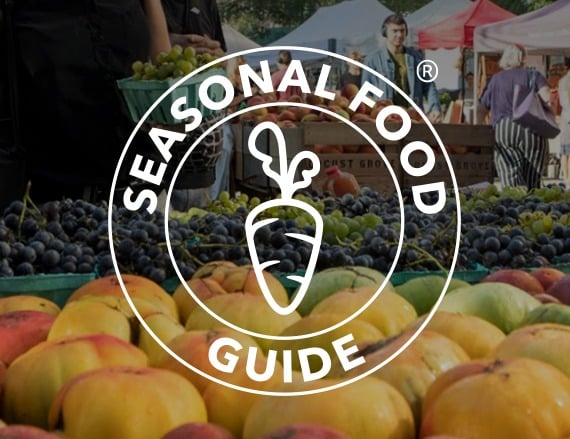Real Food Encyclopedia | Jackfruit
Jackfruit (Artocarpus heterophyllus), a large tropical fruit that grows on a tree sometimes known as a jack tree, is part of the same botanical family (Moraceae) as the fig and breadfruit. For centuries it was consumed mostly in India, Bangladesh and Sri Lanka, but in recent years it has become widely known across the globe as a meat substitute, thanks to its ability to imitate the texture of meat and offer nutritional bang for its buck. It has a distinctive, sweet smell, which some compare to bubblegum and others to overripe fruit, and a flavor with notes of mango, pineapple and very soft banana.
While most jackfruit is grown in Asia and South America (and consumed locally or processed and shipped around the world), it can thrive in Hawaiʻi and South Florida, as well as around the Caribbean.
Did you know?
- Jackfruit is the largest fruit borne by any tree, growing up to 35 inches long and weighing up to 60 pounds.
- Like the fig and the breadfruit, jackfruit is a “multiple fruit” (also known as a “collective fruit”), formed from a cluster of multiple fruiting flowers that have coalesced into a unified mass.
What to look for when buying jackfruit
A fresh jackfruit is large, green and spiky and, when ripe, has a sweet, slightly fermented odor. The flesh is green when underripe and greenish-yellow to brownish-yellow when ripe. An underripe jackfruit will have a solid sound when tapped, while ripe fruit will sound hollow.
If you’re looking for jackfruit to use in a savory preparation, choose one that is not yet ripe — the flavor will not have developed, meaning the flesh will soak up other flavors well, and the texture will be firm and stringy, making it an excellent meat substitute. If you are interested in using it for a sweet preparation, look for a ripe jackfruit.
Sustainability of jackfruit
Overall, jackfruit is considered fairly sustainable to grow. The trees are robust and not very susceptible to pests, which means they do not require many inputs. Still, commercial jackfruit production will use some pesticides, so look for certified organic jackfruit if possible.
Water
Jackfruit trees require relatively little water: around 116 gallons for one pound of fruit.
Seasonality
In the U.S., you can find fresh, locally grown jackfruit in Hawaiʻi and South Florida in the summer months and into early fall.
Geography
Jackfruit trees flourish in tropical climates and are most widely grown in India (more in the south than the north), where they are so prevalent in backyards that during peak season, jackfruit are sometimes left on neighbors’ doorsteps (or left to rot on the ground). They are also grown commercially throughout South and Southeast Asia (Sri Lanka, Bangladesh and Malaysia are top importers), as well as Jamaica and Colombia.
As the fruit has risen in popularity in the past decade, both in India — where it’s seen as a way to cheaply and healthily nourish large populations — and abroad — where it is prized as a fashionable and tasty meat alternative, production has increased.
Eating jackfruit
Be prepared for the task ahead: Opening a jackfruit and getting the flesh out can be difficult. The fruits are heavy and hard to cut, and often make a sticky mess when ripe, which is one reason some will opt for canned jackfruit instead. The flesh comes in distinct segments (or arils) that can be eaten on their own when fully ripe, or when unripe, chopped for use in soups and stews or shredded for use as a meat substitute.
Storing
Keep fresh jackfruit at room temperature for up to five days or in the refrigerator for up to six weeks.
Cooking
Jackfruit is incredibly versatile: delicious when underripe or ripe, raw or cooked, in recipes both sweet and savory. When it’s still underripe, the fruit is used more like a vegetable, including in stews, curries (Keralan style or Jamaican style) and stir-fries. When ripe, it’s enjoyed in fruit salads, preserves, ice creams and syrups. The edible seeds are also consumed as snacks or in recipes like this Goan curry. In Kerala, where jackfruit is the state fruit, it is made into every possible permutation of food imaginable, from fritters to milkshakes to pickles.
While jackfruit as a meat substitute is newer in Western countries, it’s been used this way in South Asia for hundreds of years. Explore the possibilities in dishes like jackfruit jerk tacos or BBQ sliders.
If you’re in a part of the world where the fresh fruit is not available, you may use canned or frozen jackfruit.
Preserving
Jackfruit does well dried, canned, pickled, made into preserves or frozen.
Nutrition and health
Jackfruit is a good source of Vitamin C and potassium. While it doesn’t have a lot of protein (only 3% of the recommended daily value per 100 grams), it does have more than other fruits. It has a low glycemic index, meaning it is less likely to raise blood sugar levels.
Top photo by Nudda/Adobe Stock.


